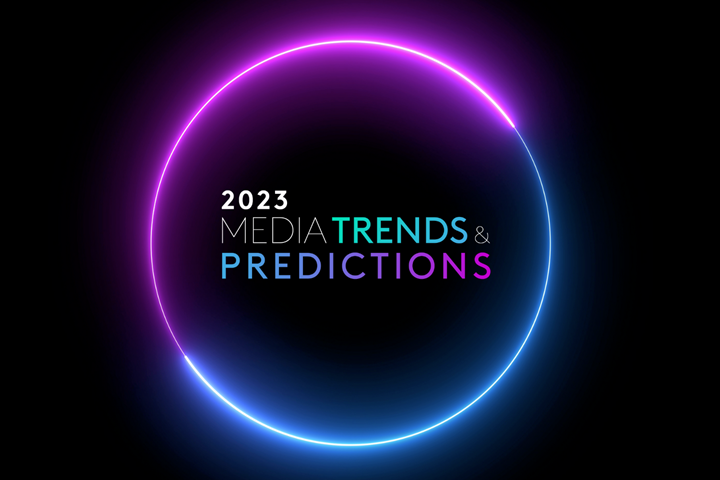Our industry finds itself on the cusp of an inflection point as the VOD businesses that disrupted the linear TV model diversify their operations, which is interestingly a familiar pattern we can trace back in time.
In the not-so-distant past, Pay-TV saw rapid early growth based on a highly successful subscription model before reaching a natural plateau. And to break past it, businesses sought ad-sales opportunities to generate new revenue streams.
As the model evolved, network operators quickly realised the value of audience measurement: in order to trade ads and have good CPMs, you need good metrics and validation to reassure the market.
Repeating the pattern
What’s to come next is therefore a repeat of the established pattern. To date, native VOD platforms have not been especially involved in audience measurement, but they too will soon find it a business imperative as they diversify their own models.
They will want accurate audience figures reported to the market; they will want to know how measurement companies are measuring them against competitors; and advertisers and content producers will want an authoritative, trusted data source.
Our future challenges
Today’s market has some key differences though, of course. The sheer complexity of the contemporary landscape is staggering, and it brings with it more risk, uncertainty and competition. With further choice comes increased audience fragmentation across platforms and devices.
Indeed, what was once just a ‘TV market’ has – thanks to Internet delivery (IP), device and platform proliferation, and new viewing forms – diversified into an intricate ‘AV ecosystem’.
Today, many people even struggle to describe what TV actually is; it’s a question that measurement bodies – as demonstrated in the UK and Brazil in 2022 – have brought to the fore as they collaborate with the industry to capture metrics on shifting media consumption.
Whether on television, streaming platforms, social media or at the cinema, on-screen formats are extremely important to brands’ communication strategies, a fact clearly demonstrated by a buoyant and increasingly advanced Brazilian market.
63% of all advertising expenditure in 2021 was invested in video formats
98% of all people watched video content at home in Q1 2022
79% of the time spent consuming video at home is dedicated to linear TV
Source: Kantar IBOPE Media, Q1 2022.
A better view of the market
Fortunately, a lot of the technologies already developed – such as watermarking or audio matching – will help meet these challenges. But this time we will go further, because one other crucial difference today is the proliferation of data sources.
Broadcasters, platforms, device manufacturers and advertisers each sit on a wealth of data. But it will never be truly fit for purpose if used only in isolation. An SVOD platform might know a lot about its viewers, but it won’t have the same understanding of the rest of the market, for example.
It’s evident the future of streaming will see an end to siloed channel planning and look towards multiple viewing forms that work towards holistic measurement that is reflective of both market and consumer dynamics.
Panels: the ground-truth
To that end, leveraging first-party big data and integrating different data sources requires something unique to tie it together: high-quality, fully consented, sample-based panels. They are the bedrock upon which disparate and siloed data sources are integrated, and the future will see them increasingly move towards a more holistic model in line with a fragmented and growing AV ecosystem.
And those who still don’t understand the power of audience measurement in helping competitive businesses ‘look over the wall’, so to speak, will certainly re-evaluate once they witness their competitors using it to read the market better, and developing audience and revenue growth strategies as a direct consequence.
Discover more on what we believe is next for the media and marketing industry by downloading our latest Media Trends & Predictions Report.
In the not-so-distant past, Pay-TV saw rapid early growth based on a highly successful subscription model before reaching a natural plateau. And to break past it, businesses sought ad-sales opportunities to generate new revenue streams.
As the model evolved, network operators quickly realised the value of audience measurement: in order to trade ads and have good CPMs, you need good metrics and validation to reassure the market.
Repeating the pattern
What’s to come next is therefore a repeat of the established pattern. To date, native VOD platforms have not been especially involved in audience measurement, but they too will soon find it a business imperative as they diversify their own models.
They will want accurate audience figures reported to the market; they will want to know how measurement companies are measuring them against competitors; and advertisers and content producers will want an authoritative, trusted data source.
Our future challenges
Today’s market has some key differences though, of course. The sheer complexity of the contemporary landscape is staggering, and it brings with it more risk, uncertainty and competition. With further choice comes increased audience fragmentation across platforms and devices.
Indeed, what was once just a ‘TV market’ has – thanks to Internet delivery (IP), device and platform proliferation, and new viewing forms – diversified into an intricate ‘AV ecosystem’.
Today, many people even struggle to describe what TV actually is; it’s a question that measurement bodies – as demonstrated in the UK and Brazil in 2022 – have brought to the fore as they collaborate with the industry to capture metrics on shifting media consumption.
Whether on television, streaming platforms, social media or at the cinema, on-screen formats are extremely important to brands’ communication strategies, a fact clearly demonstrated by a buoyant and increasingly advanced Brazilian market.
63% of all advertising expenditure in 2021 was invested in video formats
98% of all people watched video content at home in Q1 2022
79% of the time spent consuming video at home is dedicated to linear TV
Source: Kantar IBOPE Media, Q1 2022.
A better view of the market
Fortunately, a lot of the technologies already developed – such as watermarking or audio matching – will help meet these challenges. But this time we will go further, because one other crucial difference today is the proliferation of data sources.
Broadcasters, platforms, device manufacturers and advertisers each sit on a wealth of data. But it will never be truly fit for purpose if used only in isolation. An SVOD platform might know a lot about its viewers, but it won’t have the same understanding of the rest of the market, for example.
It’s evident the future of streaming will see an end to siloed channel planning and look towards multiple viewing forms that work towards holistic measurement that is reflective of both market and consumer dynamics.
Panels: the ground-truth
To that end, leveraging first-party big data and integrating different data sources requires something unique to tie it together: high-quality, fully consented, sample-based panels. They are the bedrock upon which disparate and siloed data sources are integrated, and the future will see them increasingly move towards a more holistic model in line with a fragmented and growing AV ecosystem.
And those who still don’t understand the power of audience measurement in helping competitive businesses ‘look over the wall’, so to speak, will certainly re-evaluate once they witness their competitors using it to read the market better, and developing audience and revenue growth strategies as a direct consequence.
Discover more on what we believe is next for the media and marketing industry by downloading our latest Media Trends & Predictions Report.


